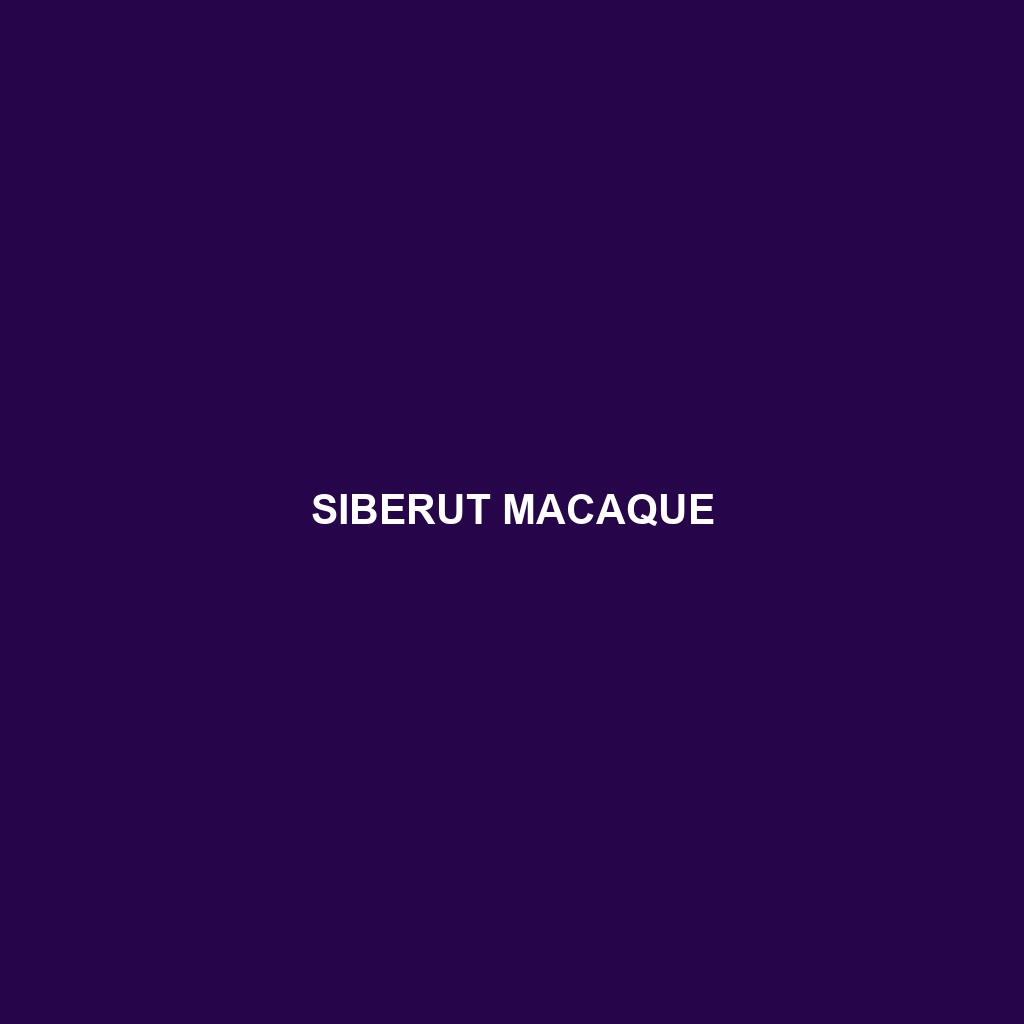Siberut Macaque (Macaca siberu) Detailed Animal Description
The Siberut Macaque (Macaca siberu) is a distinctive primate species endemic to the island of Siberut in Indonesia. Known for their striking appearance and complex social structures, these macaques play a vital role in their ecosystem. As a member of the Cercopithecidae family, the Siberut Macaque exhibits unique behaviors and adaptations that make them fascinating subjects of study and observation.
Physical Characteristics
Size: Male Siberut Macaques typically measure between 45-55 cm in body length, with a tail length of 40-50 cm. Females are generally smaller, averaging 40-50 cm in body length and 35-45 cm tail length.
Weight: Males weigh between 7-10 kg, while females are lighter, weighing around 5-7 kg.
Coloration: Their fur is predominantly dark brown to black with lighter underparts. The face is often marked with distinct white or light-colored patches around the eyes and mouth, giving them an expressive appearance.
Special Features: Notable for their dense and coarse fur, which provides protection against the humid and often wet conditions of their forest habitat, Siberut Macaques also possess long canine teeth, especially pronounced in males, used for defense and social dominance.
Behaviors
Social Interactions: Siberut Macaques live in large, complex social groups that can range from a few individuals to over 30 members. Their society is matriarchal, with females typically remaining in their natal groups, while males often leave to join other groups upon reaching maturity. Social grooming is a crucial activity for building and maintaining relationships within the group.
Feeding Habits: These macaques are omnivorous, with a diet consisting of fruits, leaves, seeds, insects, and occasionally small vertebrates. They are known to forage both in the trees and on the forest floor, showing a high degree of flexibility in their feeding strategies.
Ecological Roles: As frugivores, Siberut Macaques play a significant role in seed dispersal, aiding in the regeneration of their forest habitats. Their varied diet also helps control insect populations, contributing to the ecological balance.
Habitats
Geographical Range: The Siberut Macaque is found exclusively on the island of Siberut, part of the Mentawai Islands archipelago off the west coast of Sumatra, Indonesia.
Preferred Habitats: They inhabit tropical rainforests, mangrove swamps, and coastal areas. These macaques are adept climbers but also spend considerable time on the ground, making use of the diverse vertical strata of their forest home.
Adaptations
Physical Adaptations: The Siberut Macaque’s powerful limbs and prehensile tail enable them to navigate the dense, multi-layered forest canopy efficiently. Their dense fur helps protect against the island’s high humidity and frequent rainfall.
Behavioral Adaptations: Their complex social structures and behaviors, such as vocal communication and social grooming, are key to surviving in a habitat where cooperation and social bonds enhance group cohesion and protection.
Conservation Status
The Siberut Macaque is currently classified as Vulnerable on the IUCN Red List. Primary threats include habitat loss due to logging, agricultural expansion, and hunting. Conservation efforts are vital to ensure the survival of this unique species, focusing on habitat protection, anti-poaching measures, and community education.
Fun Facts
Tool Use: While not as well-documented as some other primates, Siberut Macaques have been observed using simple tools, such as sticks, to extract insects from crevices.
Cultural Significance: The Siberut Macaque holds cultural importance to the indigenous Mentawai people, who view them as spiritual beings and incorporate them into their traditional folklore and practices.
Longevity: In the wild, Siberut Macaques can live up to 20 years, with some individuals in captivity reaching even older ages due to the absence of predators and consistent food supply.
By understanding the Siberut Macaque’s unique characteristics, behaviors, and the challenges they face, we can appreciate the importance of conserving this fascinating primate and its habitat.
